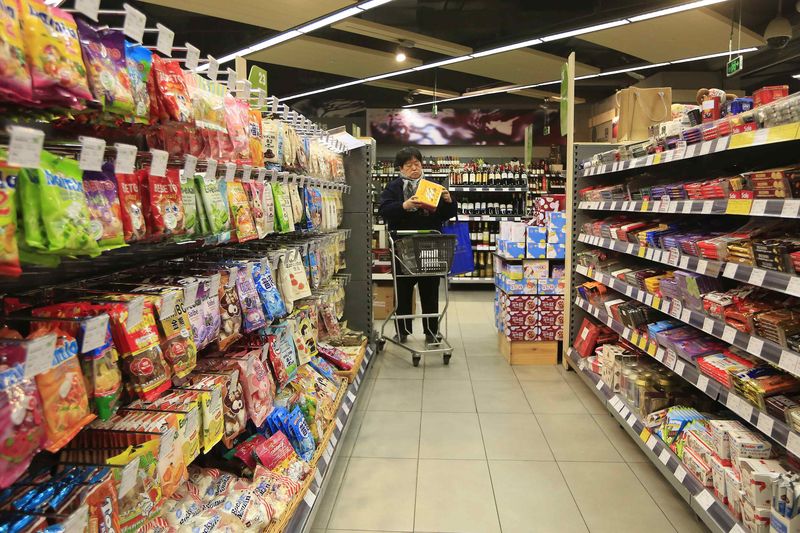Investing.com - Consumer prices in China rose at a faster pace than expected in February, setting the stage for a tighter corridor to ease monetary policy in the face of slowing growth, official data said on Wednesday.
In China CPI for February rose 1.6%, above the gain of 1.1% expected month-on-month for a year-on-year pace of 2.3%, well above the 1.9% seen. Producer price data fell 4.9% year-on-year as expected.
"The continued pick-up in inflation last month was mostly seasonal," Capital Economics said in a note to clients.
The key driver was a jump in food price inflation, from 4.1% y/y to 7.3%. A combination of unusually cold weather and a surge in demand during Chinese New Year pushed up food prices last month. In contrast, non-food inflation edged down from 1.2% y/y to 1.0%. A fall back in tourism cost inflation, which jumped in January ahead of the holiday, was largely responsible."
On producer prices, Capital Economics said the data was expected.
'It remains deep in negative territory because global commodity price deflation is still weighing on the price of industrial inputs, which make up 75% of the index. We aren’t overly concerned by this since with the price of domestic goods holding up better, many firms should actually benefit from these lower input costs."
"Looking ahead, we expect consumer price inflation to fall back soon as the seasonal pressures on food prices subside. Stepping back though, inflation does look set to edge higher this year as the sharp falls in the price of oil and other commodities over the past year drop out of the base for comparison and looser monetary and fiscal policy help to stoke broader domestic price pressures. That said, we don’t expect inflation to get out of control. We are forecasting consumer price inflation of 2.5% y/y this year, which would still be below the government’s annual target of 3% set at the recent opening of the National People’s Congress. As such we don’t think that rising inflation will prevent further policy easing over the coming quarters."
